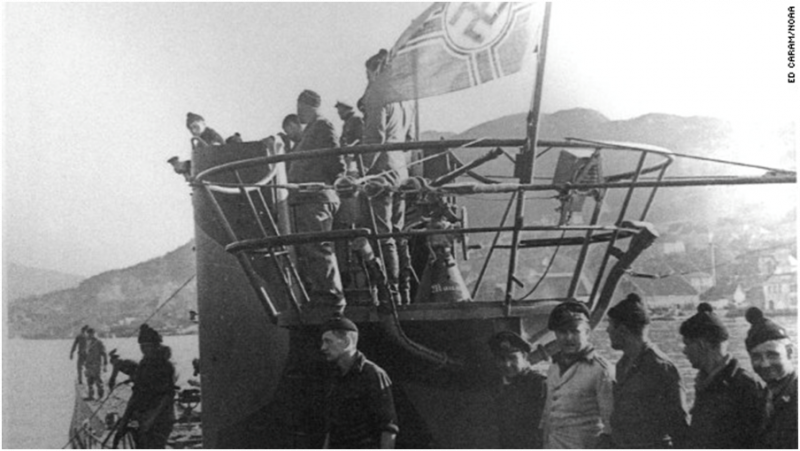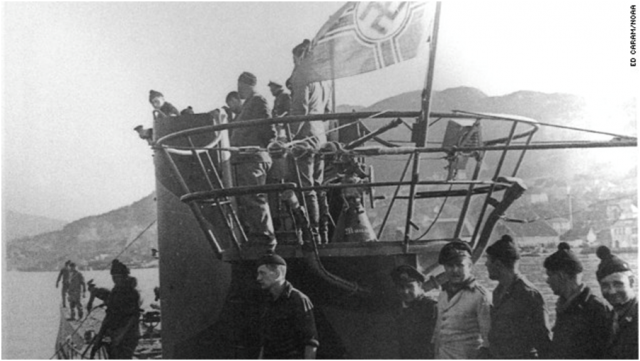A team of researchers from the National Oceanic and Atmospheric Administration (NOAA) Office of National Marine Sanctuaries discovered not one, but two naval vessels from World War II’s Battle of the Atlantic, less than 30 miles from the coast of North Carolina’s Cape Hatteras. NOAA announced the discovery Tuesday, 21 October of this year.
The two craft discovered were the Nicaraguan flagged freighter Bluefields, which was part of Convoy KS-520 – a group of merchant ships being escorted by the U.S. Navy and Coast Guard on July 15, 1942; and the U-576, a German submarine. Both ships were lost minutes apart during the same naval battle, and were found less than 240 yards from each other at the bottom of the Atlantic, the CNN Edition reports.
Neither vessel would have been sunk if not for a completely chance turn of events. U-576 had actually started travelling back to Germany for repairs (according to communications from two days before the battle), but happened to encounter the Allied convoy en route. After a month of patrolling near the American coast with little success in striking against his target, the German commander decided to attack. The U-Boat successfully sank the Nicaraguan freighter and damaged two other ships, but was heavily damaged by U.S. forces’ counterattacks and sank only a few minutes later.
While the sunken vessels are of significant historical and archaeological interest, and were in fact found in the course of a project meant to survey and document WWII shipwrecks off the North Carolina coast, there are no plans of further disturbing the wrecks. While Bluefields is not known to have suffered any casualties during the sinking, the German U-Boat went down with all 45 crew still on board. As such, the wreckage is considered a war grave. International and American law both give special protection to sunken state craft and war wreckage.
Instead, after consulting with representatives from both Great Britain and Germany, state of the art technology was used to gather high-resolution sonar imagery, to confirm the identities of the vessels and provide details about their final resting places.

